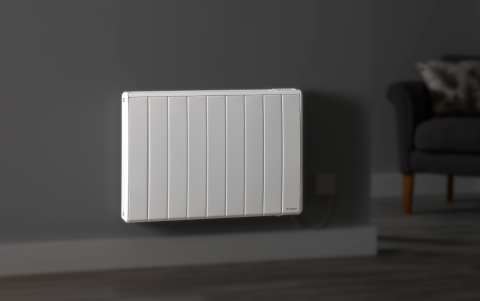Heat Pumps align with the steps we are taking in 2022

15th of June saw the new Building Regulations, Part L, Part F and Part O, come into law. This marks the biggest regulatory overhaul in the last 40 years. We are looking at the industry feedback to the 2021 Technological Innovations and Climate Change: Heat Pumps and how this translates to heat pump specification in 2022.
Over 30% of UK carbon emissions are attributed to the heating of our buildings. Reducing carbon emissions connected with heat plays a significant role in our ongoing battle with climate change. A host of policies and legislation are coming into force, impacting how we construct and heat our buildings. The Heat and Buildings Strategy published on the 19th of October 2021 was followed by the publication of updated Approved Document L and Approved Document F in December 2021.
These steps will prime the industry for the Future Homes Standard that is expected to come to force in 2025. The CO2 emissions reduction in new homes is expected to be 75-80%. Is the technology to deliver these targets available today? What needs to be done to ensure that specification of all low carbon solutions grows significantly enough to reach our net zero carbon objectives?
What are the 12 key factors that could shape a successful and sustainable UK heat pump market?
We know the low carbon technology is available today. What stops us from installing it? In our blog, we closely examine the 12 key factors that influence the heat pump market in the UK.
Whilst some of these are the same barriers that slow down the uptake of low carbon technologies, the impact differs. A sustainable and stable UK heat pump market will markedly influence the whole specification chain and impact the success of net zero carbon homes delivery.
How do we maximise the potential of heat pump technology to help us achieve net-carbon objectives?
We already know that heat pump technology alone will not deliver net zero carbon in 2050. Technologies such as hydrogen, carbon capture, thermal storage and electric batteries are likely to all play a part. We can also ensure that we implement complementary innovative solutions alongside heat pumps to maximise the potential of heat pump technology.
Increasing the electric generating capacity of renewables should go hand in hand with flexible energy storage and technologies that ensure we make the best use of available grid capacity. By embracing this holistic approach, we can ensure that heat pump solutions continue contributing to sustainable decarbonisation.
How can technological innovation in heat pumps help address the challenges of climate change?
The government acknowledged the role of heat pumps in achieving the UK net zero target and serves as a reminder that heat pumps are a vital tool in our fight against climate change.However, heat pump technology is not limited to traditional applications of the technology, and some incredibly innovative solutions are available.
An example is The Zeroth Energy System, which adapts heat pump technologies to well-known concept of a heat network. The ambient temperature communal network has been designed to overcome specific challenges of modern multi occupancy buildings. It is now installed in various projects across the UK, with a network or central plant maintaining a central ambient loop, with in-apartment water-to-water heat pumps providing hot water, heating and even cooling to the apartment spaces.
The Edel hot water heat pump is another innovation designed around existing technologies. A compact air source heat pump is installed within a traditional indirect hot water cylinder to provide renewable domestic hot water. This setup ensures ease of installation that doesn’t require a specialist installer to deliver the high efficiency of a heat pump in a small space using traditional skills.
Visit our page dedicated to New Building Regulations in England that came into law in June 2022 for more information, download our guides, or access presentations. To discuss the Glen Dimplex Heating & Ventilation range of low carbon technologies and how they can help reduce the CO2 emission emissions of your residential, commercial or retrofit project, contact our team of HVAC specialists.











